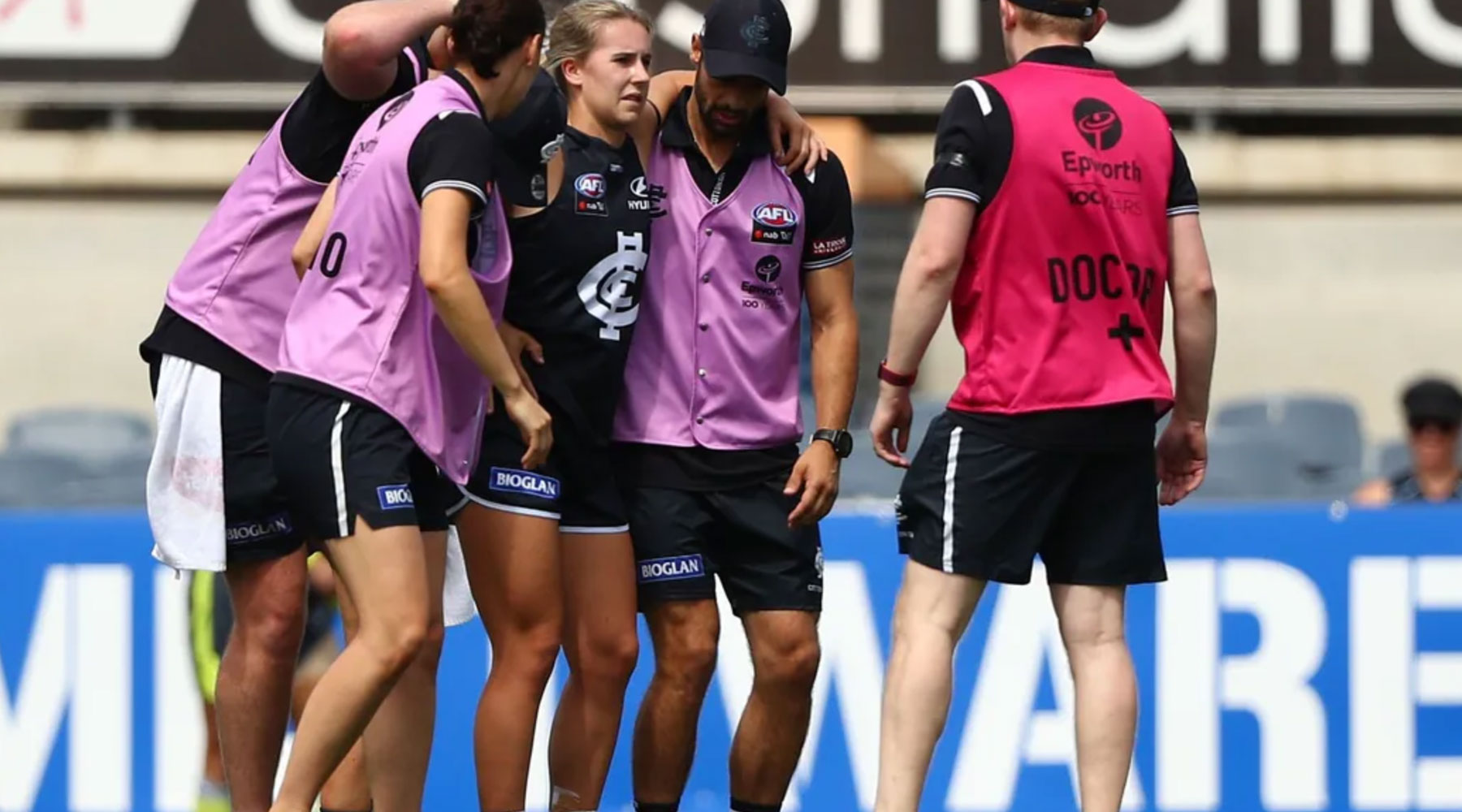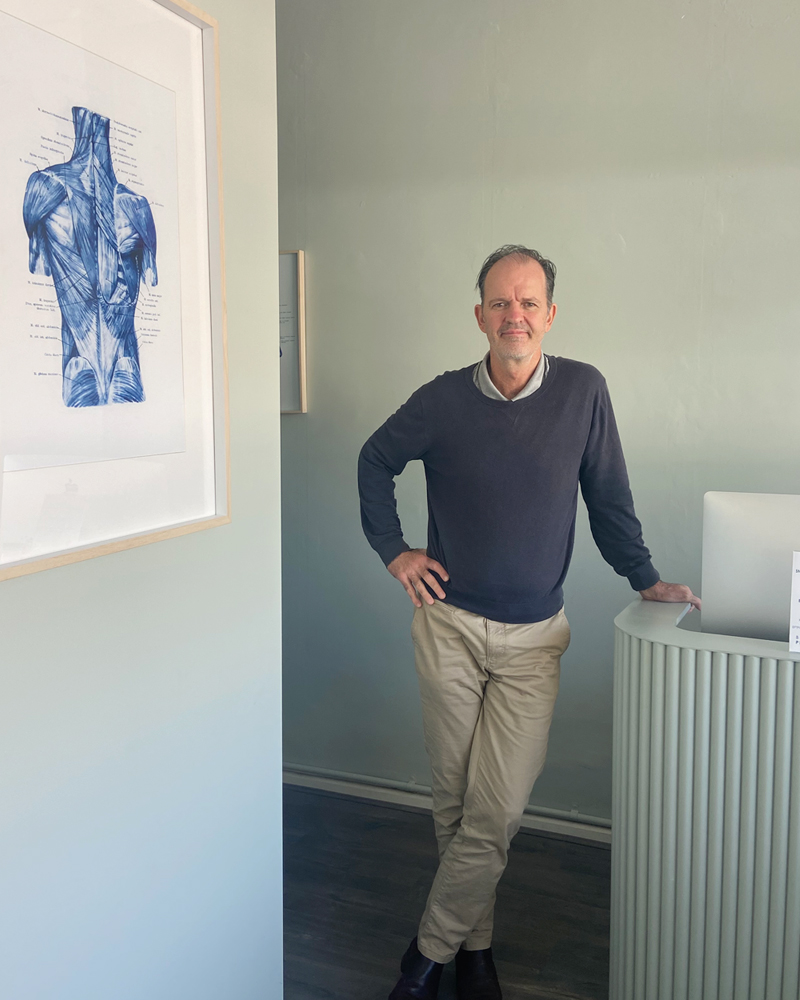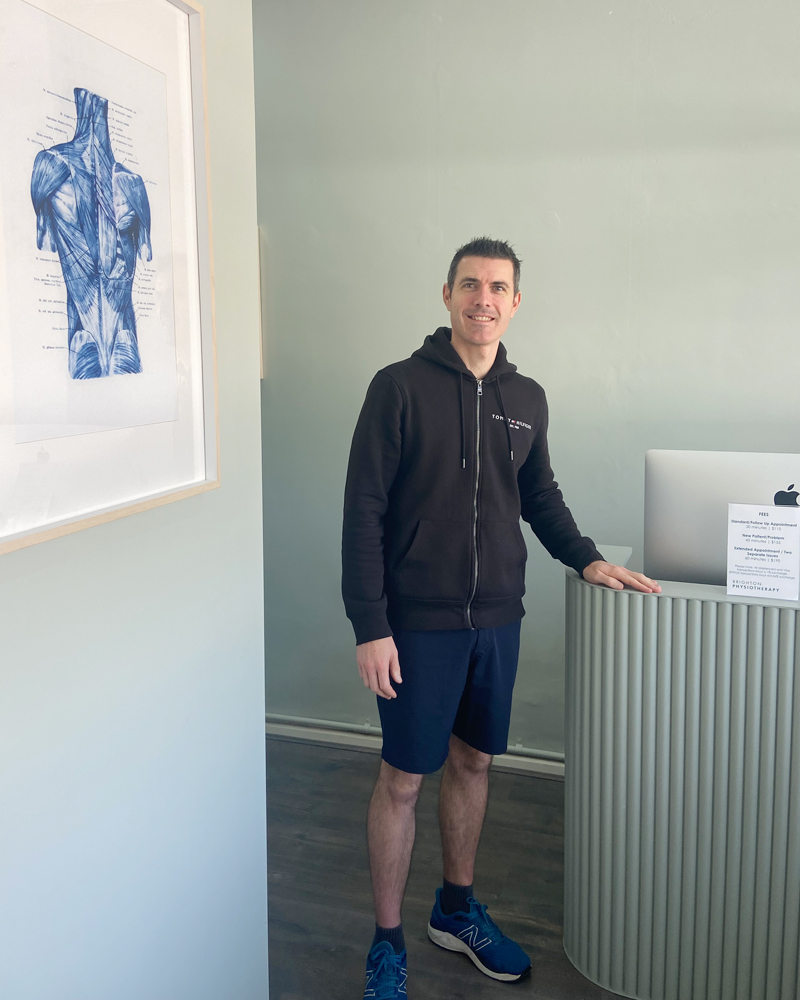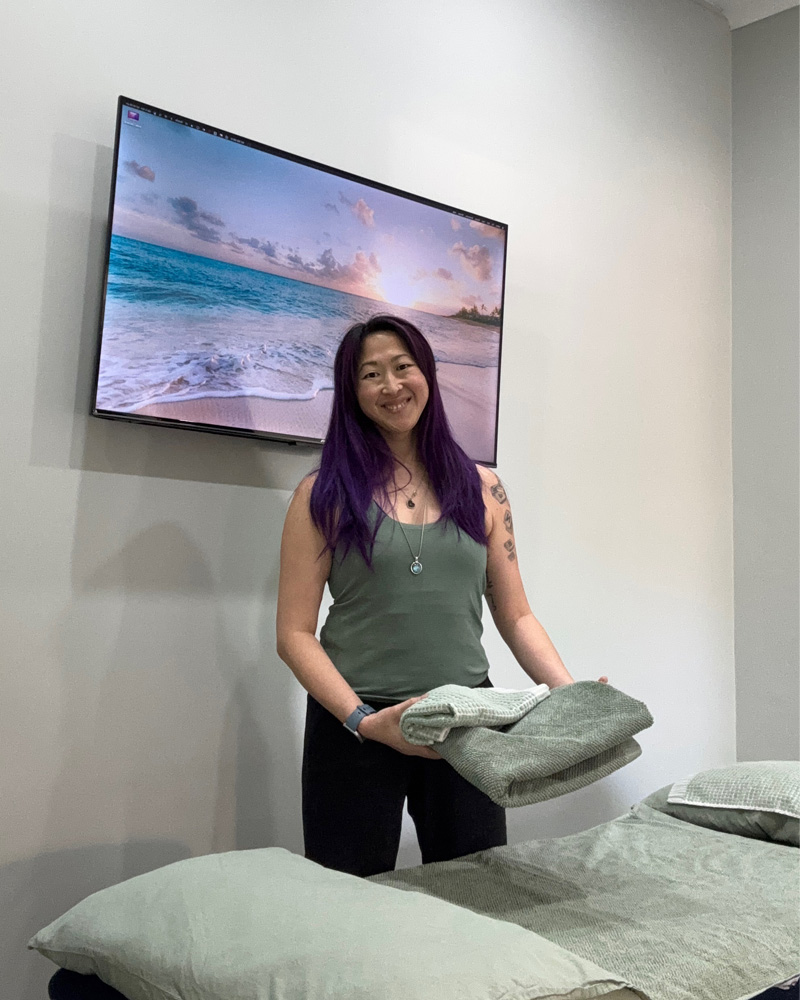AFL Physiotherapy
Overcome Pain, Enhance Performance. AFL Physiotherapy Tailored for Your Game.
Brighton Physiotherapy is renowned for its years of expertise in treating AFL-related injuries, led by experienced professionals Paul Trainor MACP (Mast - Sports and Exercise Physiotherapist) and Ryan Cope MAPA ( Mast – Exercise Science/Strength and Conditioning)

Meet our AFL physiotherapy experts: Paul Trainor & Ryan Cope.
Paul Trainor
Ryan Cope
Amy Shipperd

Common injuries and how we address them
Hamstring injuries are the most prevalent of all soft tissue injuries in the AFL and have significant recurrence rates even when well managed. The spectrum of hamstring injuries can be explained by the high loads while performing activities like kicking, running or sprinting, leaning forward to maintain or achieve extra speed, bending to pick up the ball while running, or attempting to break out of a tackle.
Brighton Physiotherapy not only use manual/”hands on” strategies to treat these issues, but draw on their extensive researched-based evidence from their studies on the appropriate strengthening. Running and return-to-play protocols to return to maximum function. Additionally, we collaborate closely with sports physicians, strength and conditioning staff and coaches to ensure a comprehensive and long term approach to each players return to training and playing.
This wholistic approach ensures less immediate pain, improved function and earlier returns to playing while aiming to reduce the risk of recurrence.
Identifying soft tissue symptoms is essential for timely and effective treatment. If not sure, always look for:
- Immediate or gradual loss of function due to pain or awareness
- Pain or tenderness at the site of the injury
- Limited range of motion or strength
- Bruising or discoloration
The ACL (anterior cruciate ligament) rupture is the most common major knee injury to occur in football and will often be a season ending injury. However, with the appropriate management, a return to full contact sport is achievable and often without recurrence.
Identifying an ACL rupture is essential for timely and effective treatment. If not sure, always look for:
- The mechanism of injury i.e., when a player plants their foot on the ground and attempts to rotate their body around that planted foot. This motion creates a twisting force across the knee joint that the ACL absorbs. When the ACL cannot cope with this force, it may rupture.
- The ACL tear may include an audible or perceived ‘pop’ of the knee at the time of the injury.
- Swelling can be fairly immediate.
- Most often the player will be unable to weight bear due to either pain or a feeling of instability, especially when twisting /pivoting.
The PCL (posterior cruciate ligament) is the largest and strongest ligament in the knee and is less commonly injured than the ACL.
It is typically caused by a direct blow to the front part of the shin, a common force in AFL football when the two ruckmen jump directly at one another, causing a direct posterior load to the tibial bone. Although not as common, the PCL may also be damaged when the knee is forced backwards / hyperextended when weight bearing.
Depending on the severity of your knee injury and/or the level of instability/dysfunction that you may have, a possibly extended conservative strengthening based protocol or surgery may be required for either of these injuries.
Brighton Physiotherapy works with Melbourne’s leading orthopaedic surgeons to organise the appropriate scans following such injuries and to determine the best course of management for each patient depending on their needs, demands and circumstances.
Ligament Sprains
The ankle sprain is one of the most common sports-related injuries seen by physiotherapists.
The ankle is a complex joint that is especially vulnerable to injury, especially when players land awkwardly, with the ankle being forced more often into an “inverted” position. This more common injury involves the lateral or outside ligament of the ankle. However, ankle sprains can range between this fundamental sprain to more serious injuries including “high” (syndesmotic) ankle sprains or potential fractures of a number of bones in both the ankle and foot.
Most ankle sprains can be managed with a rehabilitation program to retain range of movement and strength before returning to a running and return-to-play program. However, some ankle injuries require orthopaedic intervention/surgery.
At Brighton Physiotherapy, we will be able to assess and diagnose your sprain, occasionally with the use of imaging (xray/MRI etc), to provide immediate and appropriate management to ensure a return to sport as soon as possible. We also provide video-based information on appropriate taping techniques to be used when returning to training and playing and exercise programs to reduce the risk of recurrence which is a common issue in ankle injuries.
Due to the nature and number of contact sports, traumatic injuries to the shoulder joint are a especially common and often time-consuming problem ranging from acromioclavicular joint (ACJ) injuries, shoulder dislocations, labral tears and fractures.
However, shoulder injuries can also be sustained with both professional and amateur athletes who routinely engage in overhead activities (swimming), throwing activities (baseball, cricket) or overhead shots in racquet sports (tennis, squash). Rotator cuff injuries are the most common we see in this group of patients
And of course, shoulder pain is very common in the older population with degenerative joint or tendinopathies producing pain with daily activities, especially above shoulder height, and often night pain when lying on the symptomatic side
Shoulder Fracture
Fractures around the shoulder – to either the clavicle (collarbone), scapula (shoulder blade) or humerus (upper arm), can be sustained by both members of the general public either from a direct fall at home, in the garden or falling on the footpath to athletes involved in contact sports.
The immediate aim with such injuries is to provide immediate support and pain relief with imaging to evaluate the possibility of the fracture and its severity. At Brighton Physiotherapy, Paul and Ryan are fortunate to have immediate access to a number of Melbourne’s leading shoulder surgeons to again assess the need of conservative versus surgical fixation depending on the site and severity of the fracture.
AC Joint Injuries
The acromioclavicular (AC) joint is where the collarbone (clavicle) meets the highest point on the shoulder blade (acromion), and is especially vulnerable to injury when athletes fall directly onto their shoulder or with direct impact activities when colliding or tackling their opponent. Such high energy collisions can cause anything from mild sprains to complete disruption of the AC joint.
Symptoms typically include:
- Localised shoulder pain
- A noticeable bump above the shoulder (more pronounced in higher grade injuries)
- Reduced shoulder strength and range of motion
To manage this injury, immobilisation for comfort and then physiotherapy focused on range of motion restoration as well as strengthening the rotator cuff and scapular stabilisers are recommended. Despite the residual appearance of the “bump”, most remain completely functional with conservative management and do not require surgical stabilisation.
Rotator Cuff Injuries
Athletes of all ages can often subject the muscles around the shoulder (“rotator cuff”) to repetitive stress, micro trauma and potential tears. But such “tendinopathies” or tears are certainly vulnerable through degenerative changes as we get older and can cause weakness and pain in the general population with daily activities such as dressing, reaching above or behind shoulder height (putting the washing on the line!) with night pain being common.
At Brighton Physiotherapy, we are able to clinically assess for these particular types of injuries and often can be the primary line of treatment as we emphasise pain management, range of motivation restoration, and strength exercises, targeting the rotator cuff and scapular stabilisers.
When required, Brighton Physiotherapy is able to co-ordinate management with Melbourne’s leading shoulder specialists should there be a need for rotator cuff repairs and “decompression” to reduce repeated impingement of the aggravated tendon
Sports related concussion is a traumatic brain injury that can occur when an athlete receives a direct knock to the head, neck or body, resulting in a subsequent force being transmitted to the brain.
The symptoms of concussion may present at the time of the incident or perhaps over minutes, hours or even days post injury and more commonly resolve in days or weeks. However, a range of clinical signs and symptoms may persist for prolonged periods that may or may not involve the loss of consciousness. (Approximately 90% of concussions will report no loss of consciousness).
Signs of concussion vary from injury to injury, but they include headache, dizziness or balance problems, nausea or vomiting, feeling dinged or dazed, feeling like in a ‘fog’ or slowed down, having trouble concentrating or remembering, or not feeling ‘quite right’.
Some visible clues or signs of concussion include loss of responsiveness, lying motionless on the ground, unsteady on the feet, dazed or blank look, confused or difficulty remembering, or the player is not behaving like their normal selves.
Head trauma can be associated with serious and potentially fatal brain injuries. In the early stages of the injury, it is often not clear whether you are dealing with a concussion or there is a more severe underlying structural head injury. For this reason, the most important steps in initial management include:
- Recognising a suspected concussion. A simple guide is one must suspect a concussion episode if there has been a forceful knock to the head or body with any associated symptoms or signs of concussion.
- Removing the player from the game IMMEDIATELY. If in doubt – sit them out.
- Referring the player to a health care professional for assessment.
The athlete should not be sent home by themselves and adult supervision is highly recommended. Athletes with a suspected concussion should not be left alone initially for at least three hours post incident. Worsening of symptoms during this time requires immediate medical attention.
Scans are usually not required unless a potential structural injury is suspected. Normal brain scans do not eliminate the possibility that a concussion has occurred.
While concussions are not unique to contact sports (children in the playground etc.), the AFL, for example, has strict rules around concussion management and a strict return-to-play protocol. This includes:
- Relative rest in the first 24-48 hours post injury
- Recovery after the first 24-48 hours
- Graded loading program
- Unrestricted return to play
Brighton Physiotherapy follow the latest evidence-based approach to concussion management and are happy to discuss such protocols especially with concerned parents.

Physiotherapy benefits for AFL players
Injury Prevention
Targeted exercises and techniques to reduce the risk of common AFL injuries, such as hamstring strains, ACL tears, and shoulder dislocations.
Performance Enhancement
Customised training programs to improve agility, strength, and overall performance, helping you reach your peak on the field.
Flexibility and Mobility
Techniques to enhance flexibility and joint mobility, crucial for optimal performance and injury prevention.
Experience the Brighton Difference.
Our team’s passion for AFL and dedication to player well-being sets us apart. At Brighton Physiotherapy, we blend passion with expertise to offer you the best in physiotherapy.

Ready to Elevate Your Game?
Don’t let injuries hold you back. Schedule your consultation today and discover how we can help you achieve peak performance and maintain it.



